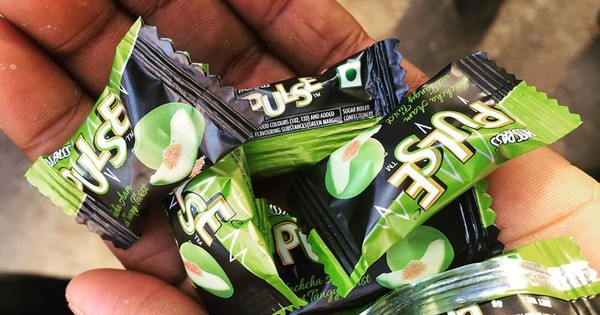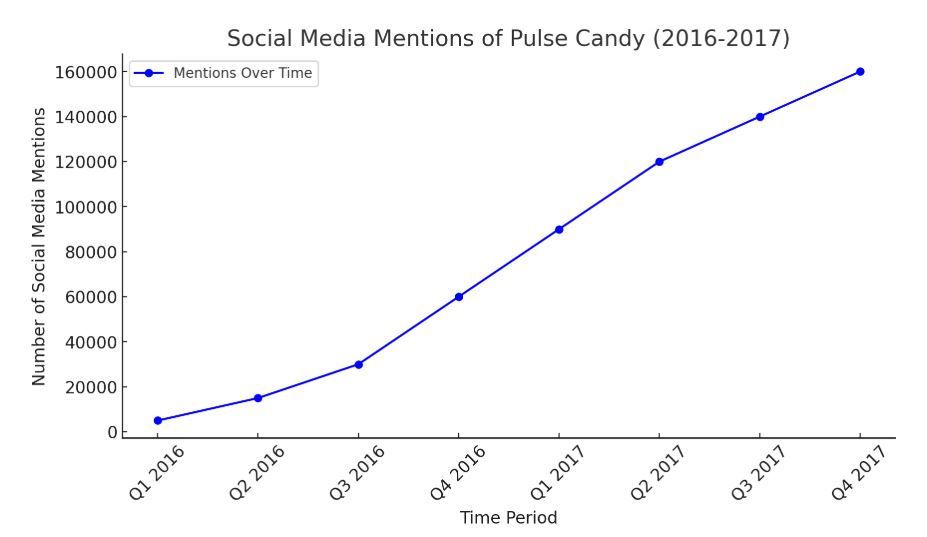Introduction
The Indian confectionery market has always been highly competitive, dominated by multinational giants like Nestlé, Cadbury, and Mars. Yet, in 2015, a relatively unknown product, Pulse Candy, took the market by storm. Launched by DS Group, this tangy and spicy hard-boiled candy disrupted the industry, achieving Rs. 100 crore in revenue within just eight months—a feat previously achieved only by Coca-Cola Zero. This article explores how Pulse Candy became a viral sensation, its marketing strategy, and the valuable business lessons it offers.

The Birth of Pulse Candy
DS Group, known for its popular FMCG products like Rajnigandha Pan Masala and Catch Spices, ventured into the confectionery segment with a unique product—Pulse Candy. Unlike traditional fruit-flavored candies, Pulse introduced an unconventional raw mango (kaccha aam) flavor with a tangy, spicy core. This innovative taste resonated with Indian consumers, making it an instant hit.
Key Milestones in Pulse Candy’s Growth
| Year | Milestone Achieved |
|---|---|
| 2015 | Launched in test markets (Rajasthan) |
| 2015 | Expanded to national markets due to high demand |
| 2016 | Achieved Rs. 100 crore revenue within 8 months |
| 2017 | Crossed Rs. 300 crore in sales, surpassing Oreo and Mars Bars |
| 2018 | Expanded into international markets |
| 2020 | Maintained dominance in the Indian candy market |
The Strategy Behind Pulse Candy’s Success
Unlike conventional confectionery brands that rely on heavy advertising, Pulse Candy’s success was driven primarily by word-of-mouth marketing. Here’s a breakdown of the key factors that contributed to its growth:
1. Unique Product Innovation
Pulse Candy’s sweet-tangy-spicy combination created an addictive taste experience, making consumers crave more. This differentiation gave it a strong competitive edge.
2. Strategic Pricing
At just Rs. 1 per candy, Pulse appealed to a wide consumer base, from children to adults. The affordable price point encouraged impulse purchases, driving repeat sales.
3. No Traditional Advertising
DS Group took a bold step by not investing in large-scale advertisements. Instead, consumer curiosity and social media buzz fueled its popularity. Users shared their experiences, leading to organic brand promotion.
4. Scarcity Marketing
Initially, Pulse Candy was released in limited quantities, creating a perception of exclusivity. The high demand and limited supply fueled interest, making it a trending topic among consumers.
How Pulse Candy Outperformed Global Brands
| Brand | Time to Reach Rs. 100 Crore Sales |
| Pulse Candy | 8 months |
| Oreo (India) | 5 years |
| Mars Bars | 3 years |
| Alpenliebe | 2 years |
As seen in the table above, Pulse Candy reached Rs. 100 crore in record time, outperforming well-established global brands.
The Role of Social Media and Organic Growth
Social media played a pivotal role in Pulse Candy’s massive success. Unlike traditional brands that relied on TV commercials and print ads, Pulse Candy became a viral sensation through social media engagement. Memes, Twitter discussions, and Facebook trends highlighted the candy’s unique taste, drawing even more consumers to try it.
Social Media Mentions (2016-2017)

The above graph showcases how social media engagement skyrocketed within the first year of Pulse Candy’s launch, boosting its sales significantly.
Expansion into International Markets
After dominating the Indian market, DS Group expanded Pulse Candy to global markets, targeting Indian diaspora communities in the US, UK, and Middle East. The strategy involved leveraging nostalgia marketing, appealing to Indians who craved the distinctive flavors of home.
Lessons from Pulse Candy’s Success
- Product Differentiation is Key – A unique flavor combination made Pulse stand out in a saturated market.
- Word-of-Mouth Can Outperform Traditional Marketing – Organic buzz and consumer recommendations played a bigger role than paid advertising.
- Scarcity Creates Demand – Initial limited availability made Pulse Candy highly sought after.
- Affordable Pricing Encourages Mass Adoption – The Rs. 1 price point made it accessible to all consumer segments.
Conclusion
Pulse Candy’s journey from an unknown brand to a record-breaking bestseller serves as a blueprint for businesses looking to disrupt the market. With the right mix of innovation, pricing strategy, and organic marketing, even a simple hard-boiled candy can take on global giants and emerge victorious.
For more articles, visit Finshots Daily.
